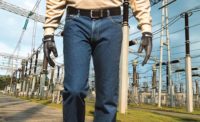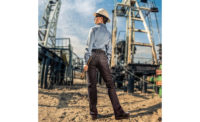When selecting outerwear for work, three areas should dictate one’s decision: warmth, protection and functionality.
The right kind of warmth
When determining the appropriate warmth level for flame-resistant (FR) outerwear, three technical aspects make all the difference: Clo value, temperature rating and MET. Each of these terms refers to a specific type of warmth measurement, all of which are interconnected and critical in the selection of FR outerwear.
Clo values represent the thermal insulation capabilities of a garment’s fabric and insulation materials — the higher the Clo value, the warmer the wearer will be. This makes it easy to compare the insulation levels between two different garments, but it doesn’t specify the coldest outside temperature a worker can be in and still be warm — an important distinction that is outlined by a garment’s temperature rating.
Temperature rating is determined by testing body temperatures when wearing various outerwear ensembles using ASTM F2732 “Standard Practice for Determining the Temperature Rating for Cold-Weather Protective Clothing.” This measurement denotes the lowest temperature in which you can wear an ensemble and remain warm based on the insulation capability of the clothing system and the wearer’s activity level — when simply wearing a jacket versus the full-body coverage of a coverall, the coverall will have a lower temperature rating.
That activity level is known as the MET, or Metabolic Equivalent of Task — the amount of internal body heat generated by the wearer’s activity level. The American National Standards Institute (ANSI) defines the amount of heat produced by a man at rest as 1 MET, and walking at a fast pace (or a similar level of activity) as a 4 MET.
As a worker’s activity level increases, the amount of metabolic heat produced increases, as well, and the wearer would require less insulation to maintain optimal body warmth, demonstrating how Clo value, temperature rating and MET all work together to outline the warmth capabilities of an FR garment for a particular work environment. To find cold-weather FR outerwear that fits a worker’s environment best, select the expected activity level (i.e., MET), then find outerwear with higher Clo values and, especially, lower temperature ratings.
Necessary levels of protection
Outerwear protection begins with ensuring that the garment is FR, and ends with ensuring that the garment is quality FR. No matter what kind of outerwear is required for the job and for the wearer’s warmth, it has to be FR (and arc rated, for environments where there is the potential for arc flash). If the outer layer of an outfit is not FR and the worker is exposed to an arc flash or flash fire, that non-FR outer layer could ignite and continue to burn.
Even if that worker is wearing FR underneath, the safety behind FR garments is compromised when exposed to what is known as a “sustained thermal load.” FR is designed to resist ignition and self-extinguish during a momentary thermal exposure, not a continuous thermal load. If the heat source isn’t extinguished immediately, the FR properties are not nearly as effective.
FR outerwear should come from trusted manufacturers that use high-quality fabrics, go through rigorous testing and inspection processes, meet all relevant industry and environmental safety standards, and be constructed for maximum durability and comfort (e.g., no metal coming in contact with the skin, extra stitching in key garment stress areas, etc.).
Workwear that works on the job
Warmth and protection are the primary qualities to examine when selecting outerwear for the workplace, but they shouldn’t come at the cost of garment functionality and comfort. Many FR workwear garments are styled to be more like modern clothing and are manufactured with the daily job requirements in mind — roomy where they need to be so as to not restrict any movement and outfitted with key accessories such as additional pockets and optional hood attachments.
FR outerwear today is designed to keep workers safe from the harsh environments of their jobsite — in terms of both the weather and electric arc flash and flash fire events. With the quality of the FR, functionality of today’s garments and the variety of available outerwear styles — bomber jackets, duck field coats, parkas, insulated coveralls, bib overalls, fleece-lined jackets, etc. — there’s no reason not to have outerwear that is FR and even arc rated.



